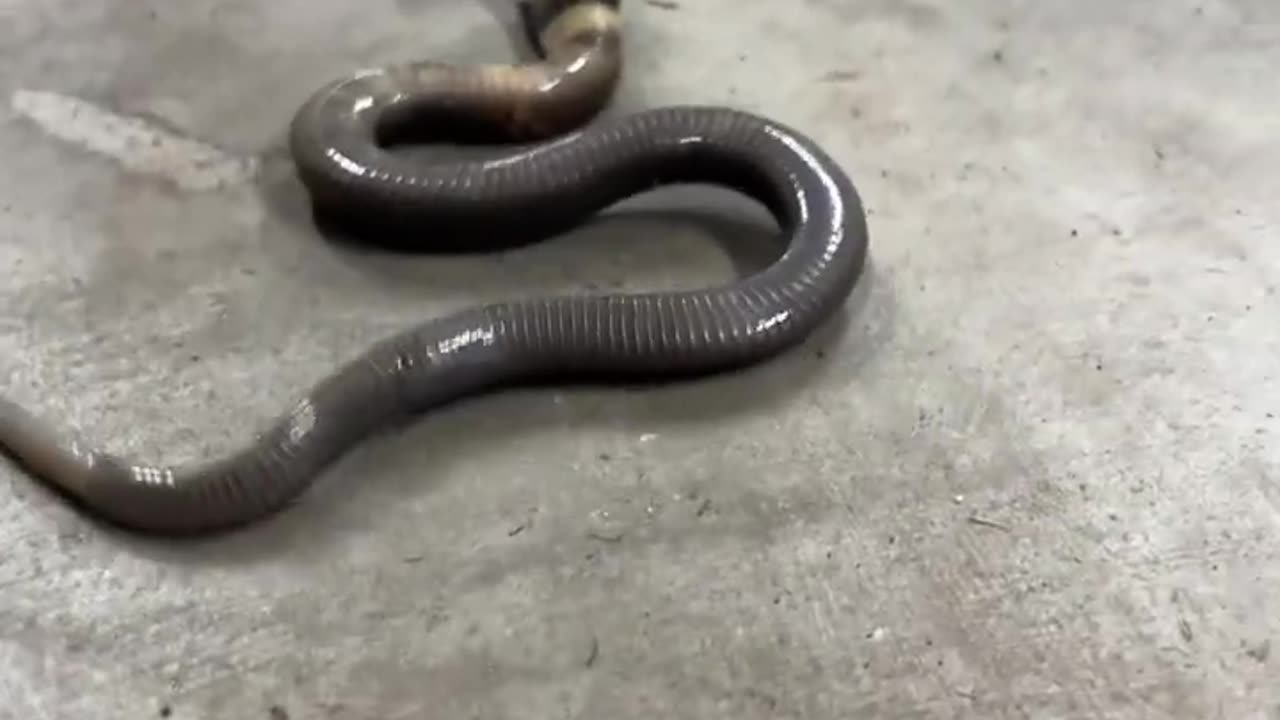Premium Only Content

Baby Cobra tries hooding up! #thatmoment
Baby cobras, like many other snake species, are often referred to as "hatchlings" or "snakelets" when they are born. The term "baby cobra" simply describes the early life stage of a cobra snake. Here are some key characteristics and information about baby cobras:
Size: Baby cobras are much smaller than adult cobras. Depending on the species, they can measure anywhere from 6 inches to 12 inches (15 to 30 centimeters) in length at birth.
Coloration: The coloration of baby cobras can vary depending on the species, but they often resemble miniature versions of the adults. They may have similar patterns and colors but on a smaller scale.
Venom: Baby cobras are typically born with fully functional venom glands and fangs. While their venom is not as potent as that of adult cobras, it can still be dangerous, especially if bitten.
Behavior: Like adult cobras, baby cobras are usually equipped with the ability to spread their hoods and deliver venomous bites when threatened. However, they may be less experienced and more prone to defensive behavior.
Diet: Baby cobras primarily feed on small prey items such as insects, small rodents, and amphibians. As they grow, their diet expands to include larger prey.
Parental Care: Some cobra species exhibit parental care, where the mother protects and sometimes even stays with her hatchlings for a period after birth. This behavior is more commonly seen in certain species like the King cobra.
Growth: Baby cobras grow quickly, and they shed their skins periodically as they grow. The frequency of shedding varies among individuals and species but tends to be more frequent in young snakes.
It's important to note that handling baby cobras or any venomous snakes can be extremely dangerous and is not recommended. Cobras, even when young, have the potential to deliver venomous bites that can be life-threatening. If you encounter baby cobras in the wild, it's best to observe them from a safe distance and avoid any attempts to handle or interact with them.
-
 LIVE
LIVE
Benny Johnson
54 minutes ago🚨Trump RAGES After Israel Bombs Iran in Massive Attack, World War 3: ‘They’re All DEAD!’
5,895 watching -
 35:36
35:36
Rethinking the Dollar
45 minutes agoBombs Drop, Stocks Flop & GOLD Tops | Morning Check-In
159 -
 1:07:59
1:07:59
Dear America
2 hours agoWW3?! Israel STRIKES Iran!! + Judge BLOCKS Trumps National Guard In LA!! WHAT IS HAPPENING‼️
78.1K158 -
![🔴[LIVE] Markets Plummet, Breaking News & Payday Friday || The MK Show](https://1a-1791.com/video/fww1/7b/s8/1/H/N/V/S/HNVSy.0kob-small-The-MK-Show-June-13th.jpg) LIVE
LIVE
Matt Kohrs
10 hours ago🔴[LIVE] Markets Plummet, Breaking News & Payday Friday || The MK Show
984 watching -
 LIVE
LIVE
Badlands Media
8 hours agoBadlands Daily: June 13, 2025
4,513 watching -
 LIVE
LIVE
LFA TV
11 hours agoLFA TV ALL DAY STREAM - FRIDAY 6/13/25
3,912 watching -
 16:31
16:31
Bearing
2 hours agoDr. Phil SPITS FACTS at Woke Leftist Losers “We are a Country of Laws” ⚡💥
2.51K18 -
 DVR
DVR
Chicks On The Right
4 hours agoIsrael strikes Iran, Padilla creates circus, Dem Govs get grilled, Gavin's emotional rollercoaster
33.2K8 -
 4:01:21
4:01:21
The Bubba Army
1 day agoIsrael SMASHES Iran! - Bubba the Love Sponge® Show | 6/13/25
105K50 -
 47:25
47:25
Friday Beers
15 hours ago $3.75 earnedWe Accidentally Unleashed a Skeleton Army in D&D
51.7K5